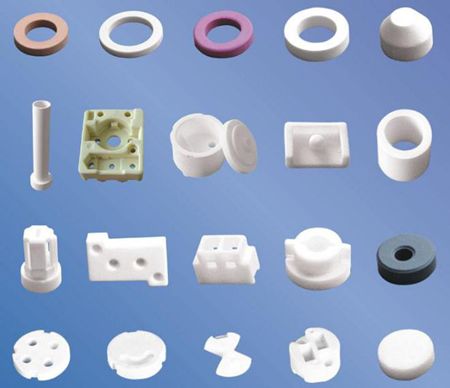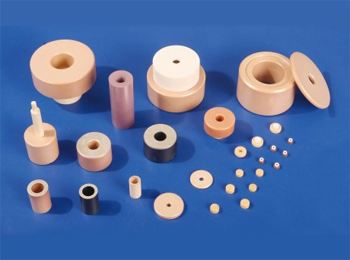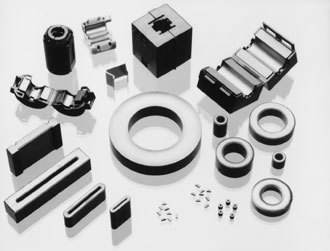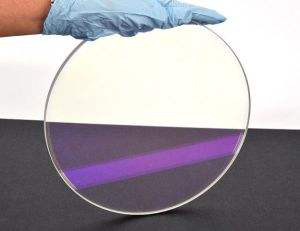

Hotline:0755-22277778
Tel:0755-22277778
Mobile:13826586185(Mr.Duan)
Fax:0755-22277776
E-mail:duanlian@xianjinyuan.cn
New functional ceramic materials are dielectric materials with electrical, magnetic, optical, acoustic, thermal, mechanical, chemical, or biological functions. There are various types of functional ceramic materials with wide applications, mainly including new ceramic materials with different functions such as ferroelectric, piezoelectric, dielectric, pyroelectric, semiconductor, electro-optic, and magnetic.

New functional ceramic materials are important foundational materials in modern high-tech fields such as electronic information, integrated circuits, mobile communication, energy technology, and national defense and military industry. Functional ceramics and their new electronic components have important strategic significance for the development of the information industry and the enhancement of comprehensive national strength.
Insulated ceramics
Insulated ceramics refer to ceramic materials used in electronic devices for installation, fixation, support, protection, insulation, isolation, and connection of various wireless components and devices. Insulating ceramics are required to have high volume resistivity, low dielectric constant, low loss factor, high dielectric strength, corrosion resistance, and good mechanical properties.
Insulated ceramics are widely used in industries such as circuit substrates, packaging, and high-frequency insulating ceramics. The main components include insulators, spark plugs, resistor substrates, and integrated circuit substrates.
Semiconductor ceramics
Semiconductor ceramics refer to polycrystalline ceramic materials formed using ceramic technology. Unlike polycrystalline semiconductors, semiconductor ceramics have a large number of grain boundaries, and the semiconductor transformation of grains is completed during the sintering process. Therefore, they have rich material microstructure states and diverse process conditions, making them particularly suitable as sensitive materials. In addition to semiconductor grain boundary ceramic capacitors, the currently used sensitive materials mainly include thermosensitive materials, voltage sensitive materials, photosensitive materials, gas sensitive materials, humidity sensitive materials, etc.
dielectric ceramic
Dielectric ceramics, also known as dielectric ceramics, refer to functional ceramics that have polarization ability under the action of an electric field and can establish an electric field in the body for a long time. Dielectric ceramics have the characteristics of high insulation resistance, high withstand voltage, low dielectric constant, low dielectric loss, high mechanical strength, and good chemical stability. They are mainly used in capacitors and microwave circuit components.

Dielectric ceramics include ceramic dielectric materials such as ferroelectric dielectric ceramics, semiconductor dielectric ceramics, high-frequency dielectric ceramics, and microwave dielectric ceramics.
Piezoelectric ceramics
Piezoelectric ceramics refer to polycrystalline ferroelectric ceramics formed by high-temperature sintering and solid-state reaction of mixed oxides (such as zirconia, lead oxide, titanium oxide, etc.), and treated with direct current and high voltage polarization to give them piezoelectric effect. They are a functional ceramic material that can convert mechanical energy and electrical energy into each other. Due to its good mechanical properties and stable piezoelectric properties, piezoelectric ceramics, as an important functional material for force, heat, electricity, and light sensitivity, have been widely used in sensors, ultrasonic transducers, micro displacement sensors, and other electronic components.
Common piezoelectric components include sensors, gas igniters, alarms, audio equipment, medical diagnostic equipment, and communications. The usual piezoelectric material is PZT, and new piezoelectric ceramic materials mainly include: highly sensitive and stable piezoelectric ceramic materials, electrostrictive ceramic materials, pyroelectric ceramic materials, etc.
Magnetic ceramic materials
Magnetic ceramics mainly refer to ferrite ceramics, which are composite oxides mainly composed of iron oxide and other iron or rare earth oxides. Ferrite is mostly a semiconductor with a much higher resistivity than general metal magnetic materials, and has the advantage of low eddy current loss. It has been widely used in high-frequency and microwave technology fields, such as radar technology, communication technology, space technology, electronic computers, etc.

High temperature superconducting ceramics
High temperature superconducting ceramics refer to functional ceramic materials with relatively high superconducting temperatures compared to metals. Since significant breakthroughs in the research of superconducting ceramics in the 1980s, the study and application of high-temperature superconducting ceramic materials have received much attention. In the past decade, China's research in this area has been at the forefront of the world. At present, the application of high-temperature superconducting materials is developing towards high current applications, electronic applications, and diamagnetism.
Nano functional ceramics
Nano functional ceramics are a new type of functional ceramics with antibacterial, activation, adsorption, filtration and other functions applied in air purification and water treatment. They have far-infrared release function, negative ion release function, photocatalytic antibacterial function, deodorization, adsorption, filtration function, and mineralization function.
Transparent functional ceramics
Transparent functional ceramic materials are optically transparent functional materials that not only possess the basic characteristics of general ferroelectric ceramics, but also exhibit excellent electro-optic effects. By controlling the components, electronic birefringence effect, electronic light scattering effect, electronic surface distortion effect, electrostriction effect, pyroelectric effect, photovoltaic effect, and photo stretching effect can be exhibited.

Transparent ceramics can be used to make various electrical optical and electromechanical dual-use devices for military and civilian purposes, including optical switches, attenuators, isolators, optical storage, displays, real-time display page assemblers, fiber optic docking, fiber fusion splicing, and optical attenuators for applications such as micro displacement drivers, light intensity sensors, and optical drivers in optical communication.
With the rapid development of materials science, various new properties and applications of functional ceramic materials are constantly recognized by people. Functional ceramics have been widely used in energy development, space technology, electronic technology, sensing technology, laser technology, optoelectronic technology, infrared technology, biotechnology, environmental science and other fields. Functional ceramics are also developing towards high performance, high reliability, multifunctionality, miniaturization, and integration.

Advanced Institute (Shenzhen) Technology Co., Ltd, © two thousand and twenty-onewww.avanzado.cn. All rights reservedGuangdong ICP No. 2021051947-1 © two thousand and twenty-onewww.xianjinyuan.cn. All rights reservedGuangdong ICP No. 2021051947-2